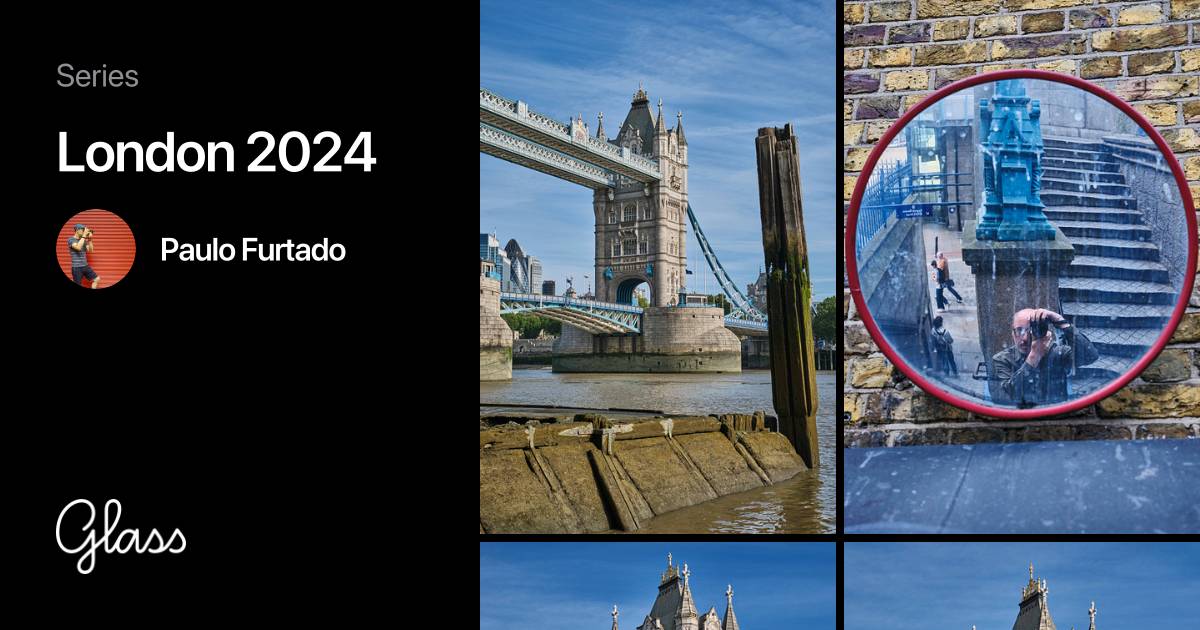London Calling: A Street Photographer's Summer Diary
London isn't a city you simply arrive in; it envelops you.

Late August in London. The very idea felt like a gamble. Tourists still swarmed, the weather threatened daily deluges, and the city’s iconic spots seemed perpetually besieged. Yet, there was a whisper of autumn in the air, a subtle shift in the light, a hint of something beyond the usual summer frenzy. It was this whisper that drew me in, camera in hand, for ten days of wandering.
London isn't a city you simply arrive in; it envelops you. Stepping onto its pavements is like entering a living, breathing organism, a chaotic symphony of accents, footsteps, and the constant hum of urban life. The challenge, as always, was where to begin. Each neighbourhood pulsed with its own distinct rhythm, from Camden’s chaotic energy to Kensington’s polished grace. It was a constant dance of adaptation, adjusting my lens and my perspective to the ever-shifting scene.
The markets, oh, the markets! Borough, Camden, Greenwich – they were a kaleidoscope of sights, sounds, and smells, a sensory overload in the best possible way. Overcrowded, yes, especially in late August, but utterly captivating. The cries of the vendors, the vibrant displays of produce, the mingling aromas of street food – it was a feast for the senses, and a playground for candid photography. The trick, I found, was to resist the urge to snap everything at once. Instead, I’d linger, observe, waiting for the fleeting moments of genuine connection: a stallholder’s smile, a shopper’s curious gaze. These were the moments that felt truly authentic, unposed, and worth capturing.
Beyond the market bustle, London unfolded as a patchwork of distinct worlds. Notting Hill, with its pastel houses and cobbled streets, felt like stepping into a Wes Anderson film. Sunlight filtered through the ivy clinging to the brickwork, casting dappled shadows on the pavement. It was a place for quiet observation, for capturing the details: a blooming window box, a vintage bicycle leaning against a wall. Then, just a short hop away, Soho roared to life, a vibrant clash of neon lights, music spilling from doorways, and a palpable sense of creative energy. It was a stark contrast, a reminder of London’s incredible diversity.
London, despite its sprawling size, is surprisingly walkable, especially if you break it down into manageable chunks. The South Bank, stretching along the Thames, became a regular haunt. Street performers drew crowds, the aroma of street food mingled with the river’s scent, and iconic landmarks like the London Eye and St. Paul’s Cathedral provided a stunning backdrop. It was a place to experiment with composition, framing candid moments against these grand structures, trying to find that delicate balance between human stories and architectural majesty.
Hampstead whispered promises of a different kind of beauty. Its village atmosphere and the vast expanse of Hampstead Heath offered a respite from the city’s intensity. I could imagine returning in autumn, when the Pergola and Hill Garden would be ablaze with colour, a photographer’s dream. But even in late August, the Heath offered glimpses of tranquility, with its winding paths and panoramic city views.
Even in the heart of the city, pockets of calm existed. Hyde Park and Greenwich Park provided sanctuaries of green, where the urban clamor faded into a gentle hum. But it was the smaller, hidden spaces that truly captivated me: the serene waters of Regent’s Canal, the ivy-clad ruins of St. Dunstan in the East, the unexpected lushness of the Barbican Conservatory tucked within its brutalist architecture. These were places for quiet contemplation, for focusing on details: a dewdrop on a leaf, the curve of a park bench, the thoughtful expression of a passerby.
The people of London, in all their diversity, were the true heart of the city. Capturing their stories required patience, a willingness to blend into the background, to become part of the street’s rhythm. Most were polite, if a little reserved – minding their own business, as you would expect. It was a reminder to be respectful, to observe rather than intrude.
The late August light was a gift, a softer, golden glow that bathed the city, especially in the mornings and evenings. It gave everything a richer texture, a deeper hue. And the unpredictable weather, far from being a hindrance, often proved to be a blessing. A sudden shower could transform a mundane street into a scene of shimmering reflections, while a burst of sunlight could illuminate a hidden detail, revealing a new perspective.
Nighttime in London held its own magic, a different kind of energy. The city transformed under the glow of streetlights, its landmarks illuminated against the dark sky. While I didn’t venture into the night as much as I might have in the past, I felt the pull of it, the promise of capturing the city’s nocturnal secrets.
London, with its iconic landmarks and bustling crowds, presented its challenges. Finding fresh perspectives wasn’t always easy, and navigating the tourist hordes could be frustrating. But it was in these very challenges that the real rewards lay. The chaotic energy, the blur of movement, the interplay of light and shadow – these were the elements that gave London its unique character, its vibrant spirit.
Over ten days, I learned that photographing London is about more than just technical skill; it’s about embracing its rhythms, its quirks, its contradictions. It’s about being open to the unexpected, to the spontaneous moments that unfold around you. It’s about finding the stories that the city whispers, and sharing them, one frame at a time.
While the following collection of photos may appear extensive, I can assure you that I could (should?) have easily taken twice as many.







